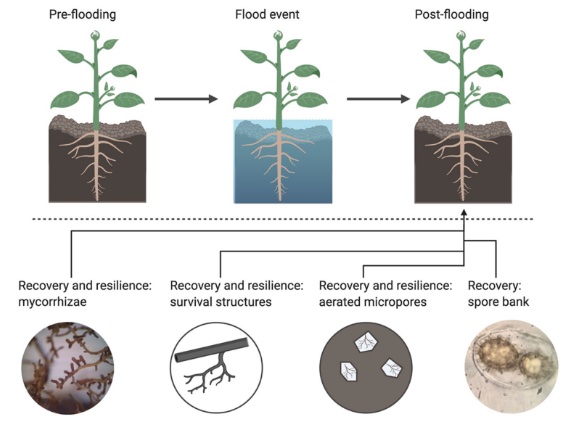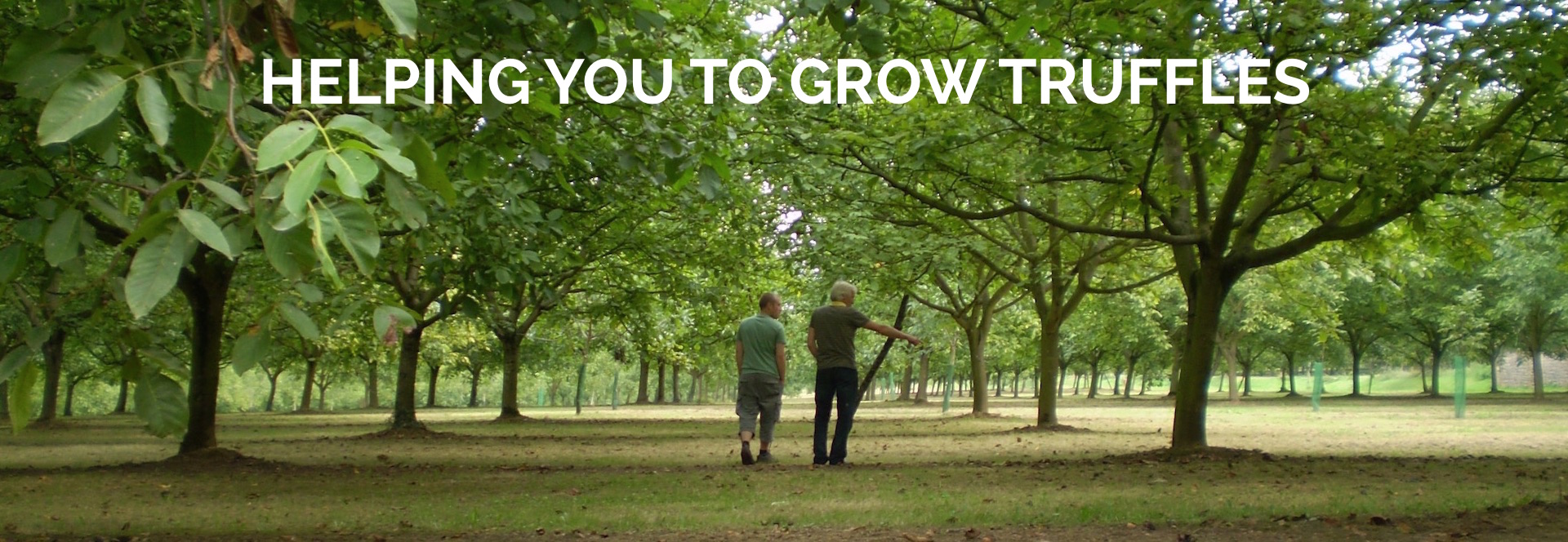
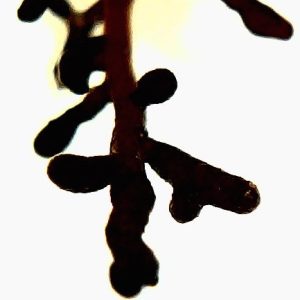
Helping you grow truffles
With research projects spanning 23 countries, the majority of our results are held in-house and used to help advise those we are working with to grow truffles. This keeps our truffle cultivation partners (learn more about becoming a partner here) on the cutting edge. Select portions of our research are made public, by way of publication in academic journals and scientific conferences. A selection of these appear below. For further information or copies of papers, please do not hesitate to get in contact.
ABSTRACT: Trained dogs can detect many biochemical traces, from the most hostile, such as COVID-19, to the most expensive, such as truffles. However, it is still unclear how the interplay of genetic disposition, education, experience, personality, and environmental conditions influences the performance of dogs. Here, we combine published evidence with the knowledge of truffle hunters to assess direct and indirect factors that affect the hunting performance of truffle dogs. Since the transport of truffle aroma into the canine nasal cavity is most puzzling, we propose five experiments to further investigate the role of weather conditions, soil parameters, and bacterial composition on the dispersal of truffle volatiles perceived by trained dogs. We also suggest exploring whether the application of multiple dogs increases the success of truffle hunting. Moreover, we argue that interdisciplinary research on dog behavior and performance, including insights from veterinary science and comparative psychology as well as the experience of truffle hunters and farmers, is needed to improve the quantity and quality of truffle harvests.
Authors: Tomáš Cejka, Paul W. Thomas, Daniel Oliachd, Ulrich Stobbe, Simon Egli, Willy Tegel, Giada Centenaro, Ludger Sproll, István Bagii, Miroslav Trnka, Ulf Büntgen
Journal of Veterinary Behavior (2022). https://doi.org/10.1016/j.jveb.2022.04.002
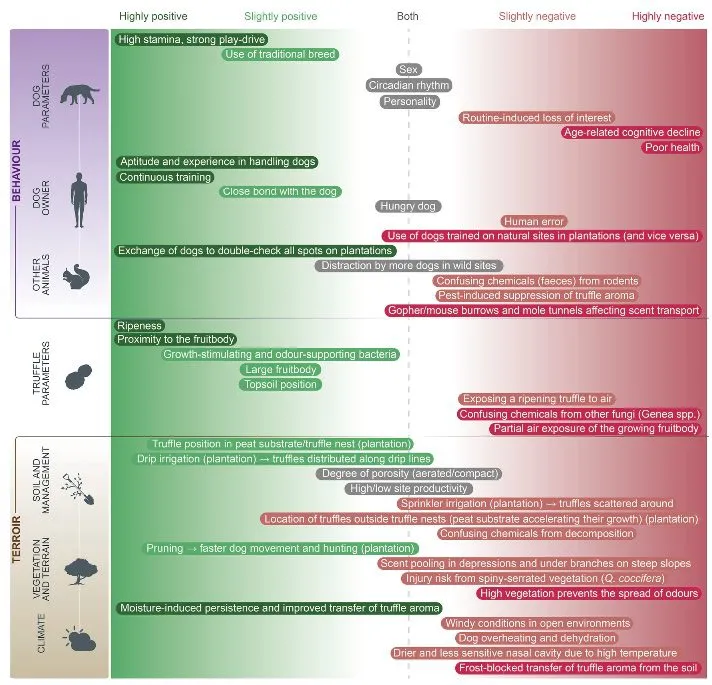
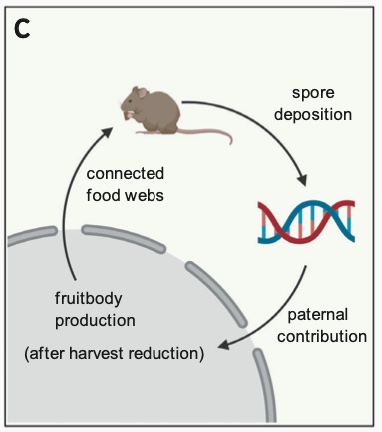
Rethinking a sustainable truffle sector under global crisis
Abstract: Global climate change is the main threat for the emerging truffle sector, which already extends across seven key regions in the Americas, Europe, South Africa and Australasia. At the same time, the potential effects of financial crises and global pandemics have not yet been considered in most risk assessments. Here we describe the direct and indirect impacts of the actual coronavirus pandemic on the rising truffle sector. We discuss how COVID-19 affects small family businesses and international enterprises, and if the current harvest decline will have ecological long-term benefits. Furthermore, we question extant cultivation practices, irrigation techniques and trade systems to prepare for a more equitable and sustainable future of the global truffle industry. Despite various foci on one of the most expensive gourmet foods and its associated agroforestry, we expect our reflections to be valuable for many other high-value crops, and a green agriculture in general.
Keywords: biodiversity, COVID-19, economic crises, global pandemic, gourmet food, green-agriculture, irrigation systems, reforestation, rural economies
Authors: Büntgen, U., Tomáš, C., Mirek, T and Thomas, P. W.
Erdkunde (2021). https://doi.org/10.3112/erdkunde.2021.04.06
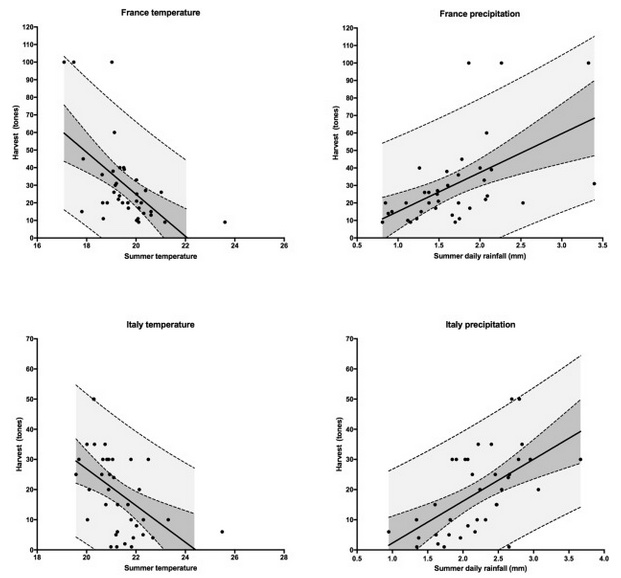
A risk assessment of Europe's black truffle sector under predicted climate change
NOTE: Research such as this allows us to guide you as to where is and isn't suitable for truffle cultivation, taking into account different climate change scenarios.
Risk and reward of the global truffle sector under predicted climate change
Abstract: Climate change has been described as the main threat for the cultivation and growth of truffles, but hydroclimate variability and model uncertainty challenge regional projections and adaptation strategies of the emerging sector. Here, we conduct a literature review to define the main Périgord truffle growing regions around the world and use 20 global climate models to assess the impact of future trends and extremes in temperature, precipitation and soil moisture on truffle production rates and price levels in all cultivation regions in the Americas, Europe, South Africa, and Australasia. Climate model simulations project 2.3 million km2 of suitable land for truffle growth will experience 50% faster aridification than the rests of the global land surface, with significantly more heat waves between 2070 and 2099 CE. Overall, truffle production rates will decrease by ∼15%, while associated price levels will increase by ∼36%. At the same time, a predicted increase in summer precipitation and less intense warming over Australasia will likely alleviate water scarcity and support higher yields of more affordable truffles. Our findings are relevant for truffle farmers and businesses to adapt their irrigation systems and management strategies to future climate change.
Keywords: adaptation strategies, agricultural drought, climate models, irrigation systems, price estimates, production risk, truffle industry
Authors: Tomáš, C., Isaac, E. L., Oliach, D., Martínez-Peña, F., Egli, S., Thomas, P. W., Trnka, M and Büntgen, U.
Environmental Research Letters (2022). https://doi.org/10.1088/1748-9326/ac47c4
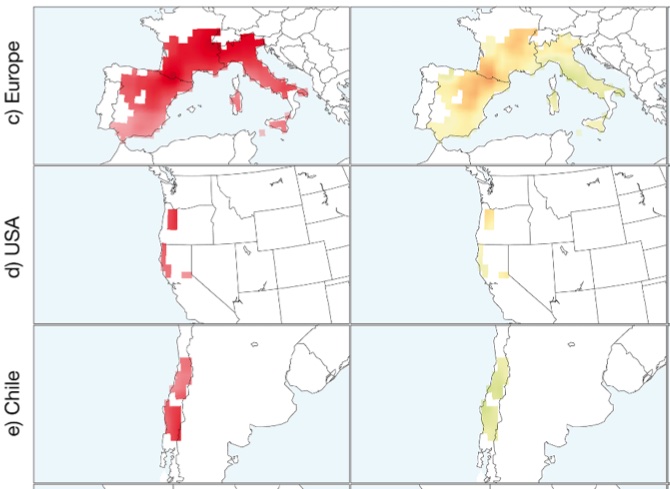
First harvest of Périgord black truffle in the UK as a result of climate change
Abstract: Although some truffle species are among the most expensive gourmet foods, much of their biology and ecology is still poorly understood. Here, we provide the first record of cultivation of the Périgord black truffle Tuber melanosporum in the UK − the most northern and maritime Périgord truffle ever cultivated. This raises hopes of counteracting the ongoing, long-term, drought-induced harvest decline of this gastronomic icon species in its natural Mediterranean habitat. More generally, we detail how the UK’s first Périgord truffle find may help protect this coveted and extremely valuable product from the impacts of ongoing and predicted global warming. Finally, we address the potential sizeable economic importance of black truffle cultivation in the northern maritime climate of the British Isles, which implies a strong financial incentive for a variety of conservation initiatives.
Keywords: Climate change · Truffle cultivation · Ectomycorrhiza fungi · Geographical distribution · Truffle ecology · Tuber melanosporum · Périgord truffle · UK
Authors: Thomas, P. W and Büntgen, U.
Climate Research (2017). https://doi.org/10.3354/cr01494
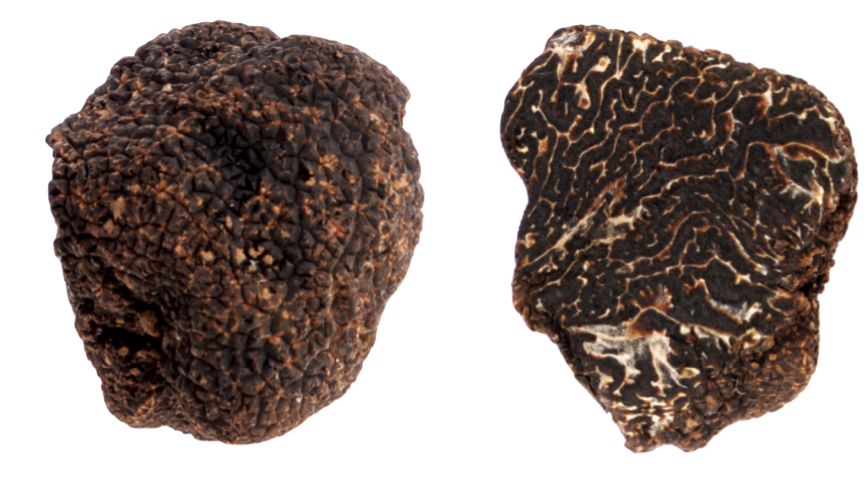
First black Perigord truffle (Tuber Melanosporum) produced in the UK

Truffles and mating types
Abbreviated abstract: Truffles are one of the most highly prized of all fungi. Recent advances and genetic studies have furthered our understanding of the mode by which these fungi reproduce. The understanding that some truffle species require a mating partner in order to produce fruiting bodies leads to many questions and opportunities in truffle cultivation. Here, a summary and analysis of the most recent work is presented. The potential applications of this understanding are discussed along with proposals for in-field modifications to improve the truffle yields of plantations.
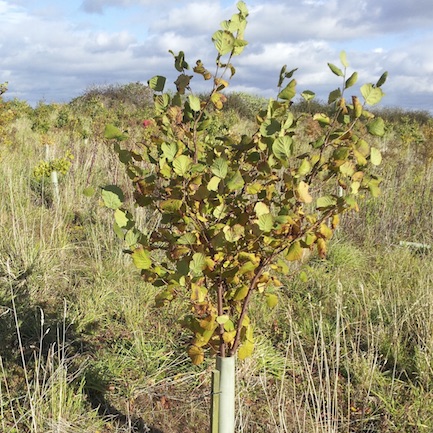
The role of soil pH
Abbreviated abstract: Here we present data from 22 sites across Europe relating soil pH to truffle mycorrhiza survivorship and development. Several data points are presented in detail and used as case studies. Utilizing the data from this study, the independent role of pH on mycorrhiza development as well as the interaction of pH and other factors, is observed. The importance that is placed on soil pH in commercial orchards is discussed.
The role of pH in Tuber aestivum/uncinatum mycorrhiza development within commercial orchards.

